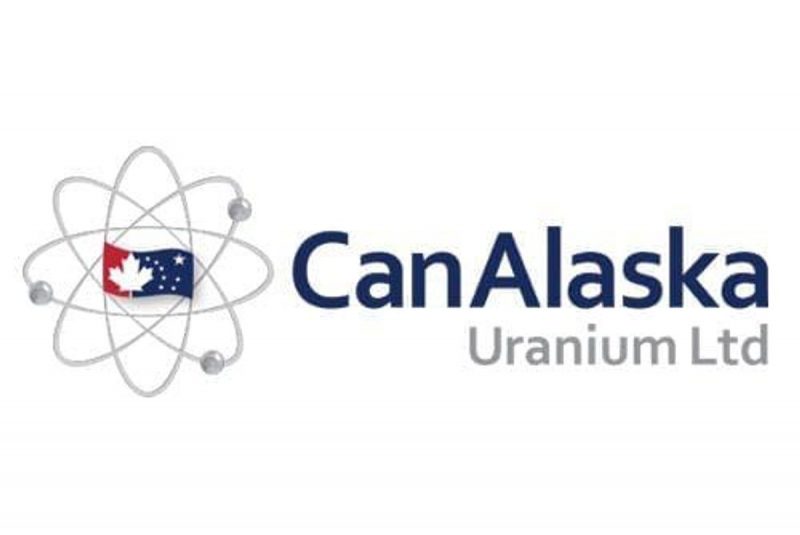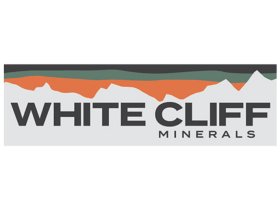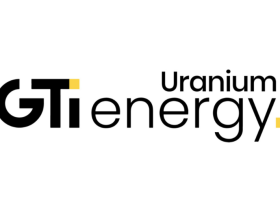Overview
CanAlaska Uranium (TSXV:CVV, OTCQX:CVVUF, FWB:DH7N) is a Canadian exploration company developing a portfolio of high-grade uranium and nickel projects located in Saskatchewan and Manitoba. The company follows a hybrid project generator and explorer model, with properties in both the Athabasca Basin and the Thompson Nickel Belt regions.
CanAlaska collectively holds one of the largest land positions in the Athabasca Basin with over 300,000 hectares in land claims. The company’s strategic investments have attracted the interest of major mining companies, including Cameco (TSX:CCO,NYSE:CCJ) and Denison (TSX:DML,NYSE:DNN). Prior partnerships have been with KORES, KEPCO, Mitsubishi and De Beers.
CanAlaska’s flagship West McArthur project is a joint venture with Cameco, with CanAlaska serving as operator and majority owner at 80 percent. Results from the 2022 drill program at West McArthur returned multiple high-grade uranium intersections with the first drill hole returning 9 meters at 2.4 percent U3O8 with follow-up holes returning grades as high as 25.4 percent U3O8. The Pike Zone discovery is located in a new area of the project that had not previously been drill-tested. The 2022 results are similar in character to the nearby high-grade Fox Lake and McArthur River uranium deposits, among others.
The company commenced its $10 million 2023 drilling program aimed to advance the new high-grade Pike Zone uranium discovery The drill program was completed in May 2023 with reports of uranium mineralization intersected in six of the nine drill holes completed with step-out drill fences 100 and 160 meters northeast of the original basement-hosted discovery and includes the first-ever intersection of unconformity-associated uranium mineralization at Pike Zone. The mineralization drilled to date at Pike Zone remains open in all directions.
Company Highlights
West McArthur uranium project is under a joint venture with Cameco, with multiple high-grade uranium discoveries on the property, including the recently announced Pike Zone discovery where a new, high-grade uranium intersection returned 9 meters at 2.4 U3O8 with other intersections grading up to 25.4 percent U3O8CanAlaska announced a new discovery on it’s Moon Lake South Joint Venture project with Denison Mines in April where drillhole MS-23-10A intersected 8.7 metres at 1.37% eU3O8. CanAlaska commenced first exploration programs on its Marshall, North Millennium and Geikie projects under a new AU$15 million option agreement with Basin EnergyCanAlaska completed it’s first drilling program on its Key Extension project, located 10 kilometres southwest of the the Key Lake Mine and Mill complex, where it intersected elevated radioactivity along hydrothermally altered graphitic fault structures.
Key Projects
West McArthur Property
The West McArthur project is located within the Athabasca Basin approximately six kilometers from the producing McArthur River mine owned by Cameco and Orano. Between 2002 and 2012, McArthur River produced 225.5 million pounds of uranium oxide grading 13.5 percent uranium oxide per tonne. The West McArthur project was consolidated by CanAlaska Uranium in 2016, giving the company 100 percent ownership of the property following a deal with Mitsubishi Development.
Under an option agreement with Cameco signed in 2016, drilling on the West McArthur property discovered a new zone of high-grade uranium mineralization at Grid 5 (termed, 42 Zone). In 2018, the company resumed operatorship of the West McArthur property with Cameco earned in as a 30-percent joint venture partner. Under the terms of the joint venture, CanAlaska and Cameco agreed to focus on expanding the 42 Zone with a 2019 drill program.
Highlights of the 2019 drill results included 0.70 meters at 6.8 percent U3O8 within 2.1 meters averaging 2.3 percent U3O8. Additional high-grade uranium intersections were realized at the 42 Zone in the 2020 and 2021 follow-up drilling campaigns.
The 2022 drill program at the West McArthur project intersected multiple high-grade uranium intersections over a 12.6 meter wide zone in WMA072-3, highlighted by 3.98 percent U3O8 over 2.3 meters from 845.9 to 848.2 meters, which contains a sub-interval of 25.4 percent U3O8 over 0.3 meters from 846.4 to 846.7 meters. WMA072-3 is located in a new area of the project along the trace of the C10 South conductor located 6 kilometers from the 42 Zone. WMA072-3 was drilled to follow-up drill hole WMA067 which returned 9 meters of 2.4 percent U3O8 mineralization.
The company completed its 2023 drill program that intersected 2.3 meters at 0.58 percent eU3O8 and 3.9 meters at 1.39 percent eU3O8, including 0.5 meters at 7.16 percent eU3O8. During the program, uranium mineralization was intersected in six of the nine drill holes completed, with step out drill fences 100 and 160 meters northeast of the original basement-hosted discovery, and includes the first-ever intersection of unconformity-associated uranium mineralization at Pike Zone. The mineralization drilled to date at Pike Zone remains open in all directions.
CanAlaska will finance the 2023 West McArthur program, further increasing its majority ownership in the project.
Cree East Project
The Cree East uranium project is located in the southeast corner of the Athabasca Basin, approximately 35 kilometers west of Cameco’s Key Lake uranium mine and mill. The project comprises 16 contiguous mineral claims totaling 55,935 hectares. The project is wholly owned by CanAlaska Uranium, which has established nine target areas across the property, with prior assistance and funding from KEPCO and KORES.
CanAlaska first began exploring Cree East in 2005, conducting VTEM airborne surveys across the property to determine priority targets. In 2006, the company collected over 2,000 surface rock samples and over 400 lake sediment samples, defining three large areas of dravite and clay alteration on the surface, with localized boulder samples containing anomalous uranium. CanAlaska later conducted additional IP-resistivity and audio magneto telluric geophysical surveys to further define the targets.
In 2008, CanAlaska conducted a $1.6-million exploration program at Cree East, returning strong fracturing and alteration in most drill holes with faulting in many of the drill holes as well. Geochemical enrichment of uranium and other elements was found in both the basement and sandstone.
Exploration work including additional geophysical surveys was conducted on Grid 7 at Cree East between 2009 and 2012 to improve the drill targets on the property. In total, 91 holes were drilled covering 34,638 meters resulting in nine target zones. All nine zones have shown indications of hydrothermal alteration or uranium mineralization.
Key Extension Project
The 17,665-hectare Key Extension project is located in the Southeastern Athabasca Basin and lies 10 kilometers southwest from the Key Lake mine and mill complex. The past-producing Key Lake deposits are located approximately 10 kilometers from the project boundary and have historically produced over 150 million lbs of uranium oxide from the Gaertner and Deilmann open pits. The Key Extension property is owned by Durama Enterprises and is currently subject to a property option agreement with CanAlaska Uranium to earn up to 100 percent interest in the property.
A ground gravity geophysical survey was conducted on the project and identified multiple priority gravity low targets associated with interpreted structural corridors and domain boundaries.
CanAlaska completed a drill program on the Key Extension project in the winter of 2023. The Company reported that program objectives were met with the multiple graphitic packages intersected containing large reactivated and brecciated fault zones associated with hydrothermal alteration and elevated radioactivity.
Waterbury Uranium Project
The Waterbury Uranium project is 100 percent owned by CanAlaska Uranium consisting of the Waterbury East and the Waterbury South claims. The Waterbury East claim is located along the Cigar Lake corridor where recent and new uranium discoveries were made by Cameco. CanAlaska is currently advancing the Waterbury South project near the interpreted regional Rabbit Lake-Collins Bay fault system trace located within 10 kilometers of the Cigar Lake mine site and within two kilometers of the Cigar Lake ore haul road.
The company conducted a 4,000-meter winter drill program at the Waterbury South uranium project focused on the extension of polymetallic unconformity uranium mineralization associated with nickel, arsenic, cobalt and zinc, intersected during the previous 2021 winter drill program.
The 2022 drill program completed six drill holes totaling 2,787 meters. Results indicate a structurally complex fault system that extends the footprint of previously intersected strong sandstone and deep basement alteration.
Moon Lake South JV Project:
CanAlaska holds a 25 percent ownership in the Moon Lake South JV operated by Denison Mines Corporation. The property is host to a five kilometer long Northeast trending conductive corridor known as the CR-3 conductor. In the winter of 2023, the company announced a new discovery in MS-23-10A, which contained 8.7 metres at 1.37 percent eU3O8, including 3.1 metres at 2.88 percent eU3O8. The MS-23-10A mineralized intersection remains open for 1,200 metres to the northeast.
Geikie Project:
CanAlaska’s 33,897 hectare Geikie property is located approximately ten kilometers east of the present-day Athabasca Basin edge, in Saskatchewan, Canada. The property, 60 percent owned by CanAlaska in partnership with Basin Energy, straddles the extension of a fertile corridor of biotite gneisses hosting the Agip S high-grade uranium showing (up to 58 percent U3O8), and the recent Baselode Energy radioactive intersections near Beckett Lake. On the Geikie property, the Mud Lake uranium-molybdenum showing, containing up to 0.225 percent uranium, 5.2 percent molybdenum, and 1.4 percent copper, and the Marina lead-zinc showings, containing up to 2.03 percent lead, 7.2 percent zinc and 0.93 oz/t silver, have been documented.
A high-resolution airborne Versatile Time Domain Electromagnetic (VTEM Plus) survey to identify basement conductors, characterize lithological and alteration variations, refine the structural setting, and prioritize drill targets for the Geikie project was completed. The company has mobilized for a 2,000-meter drill program on the project.
Thompson Nickel Properties
CanAlaska Uranium owns nine properties in the Thompson Nickel Belt: Strong, Hunter, Wilson, Strong Extension, Moak North, Halfway, Resting, Mel, and Odei River. The Thompson Nickel Belt is home to over 18 sulphide nickel deposits. Since 1959, the region has produced an estimated 5 billion pounds of nickel.
In 2023, CanAlaska announced acquisition of the Mel Nickel deposit and surrounding mineral claims in the Thompson Nickel Belt. The acquisition provides the Company with 100% ownership of the mineral lease that hosts the Mel Deposit, as well as ten mineral claims covering a total of 2,613 hectares in the Thompson Nickel Belt in Manitoba. The Mel project claims are contiguous with the Company’s 100% owned Hunter and Strong projects. The Mel property is located within 25 kilometres of Vale Canada Limited’s processing facilities in Thompson, Manitoba. The mineral lease contains the Mel deposit, which has a historical indicated resource estimate of 4.3 million tonnes at 0.875% nickel for 82.5 million pounds of contained nickel and an inferred resource estimate of 1.0 million tonnes at 0.839% nickel for 18.7 million pounds of contained nickel.
In 2023, CanAlaska intends to spinout five of its nickel properties: Halfway Lake, Resting Lake, Hunter, Odei River and its recently acquired Mel nickel deposit lease and claims. The company intends to transfer the nickel properties to a wholly-owned subsidiary, Core Nickel Corp., in consideration for common shares of Core Nickel. The spinout seeks to permit CanAlaska to continue to focus its efforts on its uranium and other properties, and position Core Nickel to operate as an independent company that would seek a separate public listing and focus on building and advancing the nickel properties.
Hunter Property
The Hunter property is located 20 kilometers north of Thompson, Manitoba. The property is 8,232 hectares in size . CanAlaska believes the property is underlain by the same series of formations that host the nickel deposits along the Thompson Nickel Belt and considers the property to be an extension of the belt. Using historical exploration data, a number of exploration targets have been defined surrounding the Mel nickel deposit, which was first located in the 1970s.
Mel Property
The Mel project comprises 2,613 hectares of land approximately 25 kilometres away from Thompson Manitoba. The Mel deposit was discovered in 1961 and was subsequently explored between 1961 and 1971. Between 1999 and 2004, Inco completed subsequent drill programs on the Mel project. Victory Nickel acquired the property in 2007 and completed a resource estimate. The mineral lease contains the Mel deposit, which has a historical indicated resource estimate of 4.3 million tonnes at 0.875% nickel for 82.5 million pounds of contained nickel and an inferred resource estimate of 1.0 million tonnes at 0.839% nickel for 18.7 million pounds of contained nickel. The Company believes the Mel property is underexplored, with previous focus being mostly on the immediate Mel lease and deposit.
Strong Property
The Strong project comprises 6,165 hectares of land approximately 26 kilometers away from Thompson, Manitoba, including one mineral exploration license. The Strong property was explored by a number of companies during the 1950s and 1970s, leading to the discovery of the Mel nickel deposit located to the east of the Hunter property and south of the Strong property. Falconbridge and Crowflight Minerals Inc. were previously active on the Strong property between 1998 and 2005.
CanAlaska has established significant exploration targets that have been defined on both properties based on historical data. A VTEM survey completed in 2007 by Crowflight provided the company with numerous large geophysical targets, none of which have been drilled. Several of these targets are in the same structural position as the nearby Mel deposit. CanAlaska has since added three new large mineral exploration licenses adjacent to the Strong property where prospective nickel targets are present.
Resting and Halfway Properties
The Resting and Halfway properties cover prospective areas for nickel mineralization along similar trends to the Manibridge Property. The Manibridge project was recently part of an option agreement to Metal Energy. The work completed by Metal Energy on Manibridge proved the exploration thesis of CanAlaska that the Thompson Nickel Belt has not been adequately explored for additional nickel resources. The Resting and Halfway projects are also on trend from the nearby high-grade Bucko nickel mine and mill owned by CaNickel.
Management Team
Ambassador Thomas Graham Jr. – Chairman of the Board and Director
Ambassador Thomas Graham, Jr. is one of the world’s leading experts in nuclear non-proliferation. Graham has served under four successive US presidents as a senior US diplomat involved in the negotiation of every major international arms control and non-proliferation agreement for the past 35 years. This includes the SALT, START, ABM, INF, NPT, CFE and CTBT Treaties. Graham has served with the US Arms Control and Disarmament Agency and as the special representative of the President of the United States for arms control, non-proliferation, and disarmament, in which role he successfully led US government efforts to achieve the permanent extension of the Nuclear Non-Proliferation Treaty.
Cory Belyk – CEO, Executive Vice-president and Director
Cory Belyk is a professional geologist with nearly 30 years of experience working for major and junior mining companies in the Athabasca Basin and worldwide. Prior to joining CanAlaska in 2019 as chief operating officer, he was director of exploration for Cameco’s international exploration operations including Mongolia and Australia. Belyk was also a member of Cameco’s exploration management team during the Fox Lake and West McArthur uranium discoveries in Saskatchewan. Belyk holds a bachelor’s (1994) degree in geology from the University of Saskatchewan and a certificate in negotiation from Harvard Law School (2014). He is a registered member of the Association of Professional Engineers and Geoscientists of Saskatchewan and British Columbia.
Nathan Bridge – Vice-president of Exploration
Nathan Bridge has over a decade of experience managing exploration, delineation, and geotechnical drilling programs at Cameco Corporation. He was senior geologist on Cameco’s Fox Lake discovery team that took the deposit from exploration stage, through discovery, and into resource definition. Bridge has spent the majority of his career exploring uranium and in 2017 he led the exploration program that discovered the 42 Zone on the Company’s West McArthur project.
Harry Chan – Chief Financial Officer and Corporate Secretary
Harry Chan has over 20 years of experience working in several different industries ranging from public practice, sports entertainment, wholesale distribution and telecommunications. He is a graduate of the University of British Columbia and received his Certified General Accountant designation in BC in 1996.
Peter G. Dasler – Director
Peter Dasler, in 2004, positioned CanAlaska Uranium, (then CanAlaska Ventures Ltd.), to become a significant presence in the field of Canadian uranium exploration by staking mineral claims in the most favorable districts of Canada’s Athabasca Basin, home to the world’s largest and richest uranium mines. He has since assembled an expert geological team that has enabled CanAlaska to carry out extensive exploration and advance multiple uranium projects towards discovery. Dasler possesses a comprehensive mineral exploration and public company management background, having worked for over 40 years in Canada as an executive and consulting geologist for companies engaged in the exploration for gold, copper, platinum, nickel, molybdenum, lead and zinc. Previously, he held the position of mine manager and production manager of the 10-million-ton-per-annum Taharoa Ironsand Mine in his native New Zealand.
Jean Luc Roy – Director
Jean Luc Roy is an independent Director of the Company (2007 – present). He has over 20 years of experience in the mining industry. The majority of his experience has been in Africa for companies such as International Gold Resources, Ashanti Goldfields Inc., Senafo, and First Quantum Minerals. Roy has managed projects from exploration through to production in three different countries. As managing director for First Quantum Minerals, Roy played a crucial role in securing extensive land positions and by successfully placing a mining operation into production in the Democratic Republic of Congo during a period of major unrest in the country. Roy is presently a resident of Burkina Faso where is COO of Ampella Mining Ltd an Australian listed company focused on gold exploration in West Africa with their flagship property Batie West.
Karen Lloyd – Director
Karen Lloyd comes from a strong and significant strategy and marketing background across five different industries including mining, telecommunications, online payments, executive training and banking. This depth of experience comes from her employment with Telus Communications, Hongkong Bank of Canada and Cameco Corporation. Between 2009 and 2020, Lloyd managed a team of contract and inventory specialists to seamlessly fulfill global uranium sales generating annual revenue of between $1.8 and $2.4 billion for Cameco Corporation as a director in Cameco’s Marketing team. In April 2021, Lloyd joined Kreos Aviation as chief operating officer where she oversees all aspects of the Kreos operations including asset management, strategic alliances, flight operations, maintenance, fuel operations, marketing and sales, and business development.
Geoff Gay – Director
Geoff Gay is currently chief executive officer of Athabasca Basin Development, an Indigenous-owned investment company based in Saskatchewan. Gay has been its executive leader, and subsequent CEO, since the company’s inception nineteen years ago and was instrumental in establishing and growing the company to where it is today. As CEO, Gay is responsible to articulate the vision of the partnership with a focus on creating value for the unit holders and leading the company in long term strategic planning and implementation, evaluating new opportunities for investment, assessing and mitigating risk, and overseeing all financial aspects of the partnership. In 2017, Gay was named Business Leader of the Year by Saskatchewan Chamber of Commerce at its annual ABEX awards.
Shane Shircliff – Advisor
Shane Shircliff has over twenty years of experience in senior management and corporate director roles for both publicly traded and private companies, and has extensive experience with various publicly traded regulatory regimes. Shircliff’s breadth of expertise over his career includes negotiation, deal structure, due diligence and transacting mergers, acquisitions and divestitures totaling over one billion dollars in value. Industries of experience include logistics, finance, natural resources, exploration and mining, retail, real estate and construction. Shircliff has been directly involved with all aspects of developing resource projects encompassing lithium, uranium, gold, silver, industrial minerals, diamonds as well as oil and gas in a variety of countries. Shircliff is the founder and chief executive officer of Clinworth Management Corp., a private company, which provides management, acquisition, divestiture, and corporate development services to a wide range of clients.





